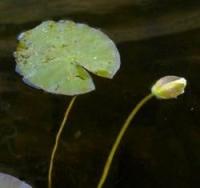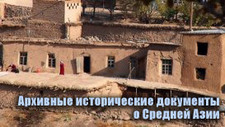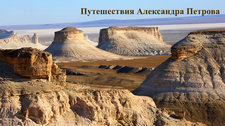You are here
Springs in Karkaraly Mountains


Trip from Karkaraly park to Bayanaul.
“When traveling through the Dzhusaly tract, I found red clay at the bottom of this mountain, at the Auliebulak key or the Holy spring called, flowing out of this mountain, it has an astringent bitter-salty-sour taste ... Drinking water from Auliebulak by Kyrgyz people gives relief in various diseases. As a sign of reverence for healing power, the people, gathering, light candles and make sacrifices with different cattle”
College assessor Darto (De Arto). Report to Omsk regional chief S.B. Bronevsky. 1826.
Walk in Karkaraly park.
Springs of Karkaraly Park are living sources of the mountains.
Karkaraly Mountains are not only a realm of granite domes and pine forests, but also a land where water is born. The springs here, like the breath of the earth itself, are quiet but tireless sources of life, nourishing rivers, lakes, and people. They reflect the unique natural state of the Kazakh Uplands, where rock, air, and moisture merge into a harmonious whole.
Origin and Natural Features of Springs in Karkaraly Mountains.
The hydrological network of Karkaraly Park owes its origin largely to tectonic processes. The spring waters form on the slopes of granite and gneiss massifs, where underground strata retain moisture after rains and snowmelt. Natural cracks and fissures exist within the rock mass, allowing water to slowly seep downward until it encounters an impermeable layer, where it emerges as cold springs.
Many seasonal springs become active in the spring and early summer when the groundwater level rises. Others are permanent, with a steady flow that never dries up even during the hottest months. Their water temperature typically remains between 6 and 8°C year-round.
Chemically, these fresh, slightly mineralized hydrocarbonate waters are rich in oxygen and trace elements, making them potable and beneficial for the body.
Springs as a symbol of purity and strength in Karkaraly Mountains.
One of the characteristic features of the Karkaraly Mountains is their springs. Their water is fresh, pleasant to the taste, and quite cold. The Suukbulak spring is particularly popular with local residents. Bubbles constantly emerge from the bottom of the spring, indicating that the water is truly carbonated.
The spring's flow rate has been determined to be modest, at 0.45 liters per second. Summer water temperatures reach 6°C. According to locals, the spring, which never freezes in any winter, always maintains a consistent temperature. The most significant forest river is the Karkaralinka.
It originates from two headwaters in the eastern mountain ranges. The left, fuller branch includes the Bolshaya and Malaya Karkaralinka springs, which merge within the city limits. The right branch, which dries up in the summer, is a ravine near Bolshoe Lake.
Their common channel is called Kurozek-Sukhoi Klyuch. After the confluence of both headwaters, the Karkaralinka receives the left-hand tributaries Tyulkuli and Tasbulak. Cutting through the low hills of Karamurla and Saryzhal, the river rushes toward Lake Karasor.
The Kengir Stream begins on the spurs of Komsomolsky Peak, heading due east along the Kabanya Shchel valley. Beyond the village of Komissarovsky, skirting powerful granite outcrops, the stream makes a sharp southward turn and is named the Karasu River.
After 20 km, the Karasu flows into the freshwater Soltankopa Lake. The Zharly River, a full-flowing, fast-flowing river, flows along the western slopes of the Karkaraly Mountains and empties into Lake Karasor. The park's main spring area is the Tasbulak valley (meaning "Stone Spring" in Kazakh).
Here, at an altitude of approximately 820 meters above sea level, dozens of cold streams emerge directly from beneath granite slabs. They collect into streams that feed small lakes and ponds at the foot of the mountains. Besides Tasbulak, other well-known springs include the Komissarovsky, Shaitankolsky, and Kokshetausky springs.
Komissarovsky Spring, located on the southeastern slopes of the lake of the same name, is renowned for its mild flavor and exceptionally clear water. The Shaitankol Spring, at the foot of the mountain where the legendary Devil's Lake lies, is believed by locals to possess a "living force," its water supposedly "drives away sleep and despondency."
In the Kokshetau valley, springs flow directly from cracks in granite slabs, forming small, transparent basins. In spring, their banks are covered with flowers, and on hot days, people fly here to drink. Mountain birds and squirrels drink from the springs.
The water of these springs is as clear as the mountain air and remains cool even in summer. Old-timers of Karkaraly say:
- "Whoever has drunk water from Tasbulak will never forget Karkaraly."
There is a beautiful legend about springs of Karkaraly Mountains.
Long ago, an old shaman lived in these mountains. He often prayed to the spirits that the earth would not dry up, that water would ring in the valleys. Hearing his prayers, the mountain spirits sent rain, and when it left, the first spring, Tasbulak, gushed from a stone at the site of the shaman's fire. Since then, its water has never dried up, even during years of drought.
Ecological and cultural significance of Karkaraly springs.
Karkaraly springs are an important part of the region's ecosystem. They maintain humidity in the valleys, feed lakes and marshes, and promote the development of flora. Sedge, mint, and fireweed grow around the springs, along with rosehip and juniper bushes.
In winter, when snow covers the forests, the springs remain unfrozen - you can see the tracks of roe deer, foxes, black grouse, and even wild boar coming to the water. For local residents and pilgrims, the springs have long been considered sacred places.
People believed that each spring had its own guardian, su iyesi, the spirit of water. Before collecting water, it was customary to quietly thank the spring or leave a small stone at it as a sign of respect.
Springs and Hiking Routes in Karkaraly Mountains.
Today, many trails in Karkaraly Park run along spring valleys. The Tasbulak trail, which begins at the Karkaraly Park Nature Museum, is particularly popular. The trail follows a forest road alongside babbling streams, then climbs granite slopes, offering panoramic views of the mountains and valleys of Karkaraly.
There are rest areas, bridges, and observation platforms here. Tourists often fill bottles with water; it's not only delicious but also surprisingly fresh, even after long storage.
Breath of earth in Karkaraly Mountains.
The springs of Karkaraly Park are the living memory of the mountains. Their water carries the breath of granite, the aroma of pine needles, and the whisper of ancient legends. When you stand by a clear spring and listen to the water trickle between stones, it seems as if the earth itself is telling you a story - of time flowing like a stream, and of the eternal purity hidden in the depths of Karkaraly.
Authority and photos by:
Alexander Petrov.







